1. |
Mesotibia with subapical notch and tooth on inner margin (Fig. 1) | . |
| 1'. . |
Mesotibia with inner margin entire; if present, mesotibial tooth at apex (Fig. 2) | . 3 |
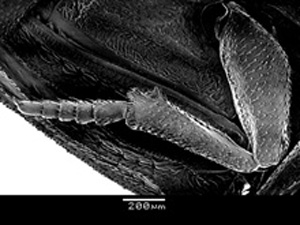 |
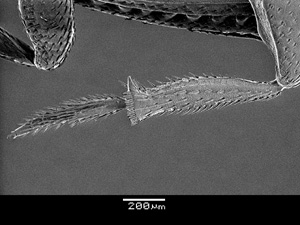 |
Figure 1. Aschnarhyparus peregrinus |
Figure 2. Rhyparus mexicanus |
2. |
Metatibial apex fringed with distinctly unequal spinules, mixed short and long (Fig. 3). Elytral intervals often dull | . |
| 2'. . |
Metatbial apex fringed with short spinules of eqaul length (Fig. 4). Elytarl intervals shiny | . 3 |
 |
 |
Figure 3.Diapterna hamata. |
Figure 4. Teuchestes fossor. |
| 2(1). . . |
Meso- and metatibiae flattened, triangular in cross section (Fig. 3). Pronotal carina sharp, uniform height throughout length | |
| 2'. . . |
Meso- and metatibiae more cylindrical, circular in cross section (Fig. 4). Pronotal carina swollen; more prominent, bulbous anteriorly | |
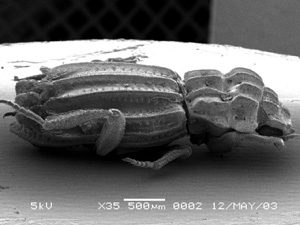 |
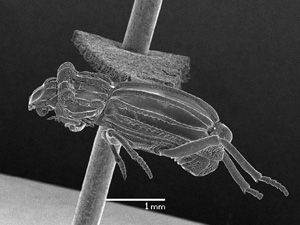 |
Figure 3. Aschnarhyparus peregrinus |
Figure 4. Termitodius coronatus |
| 3(1). . |
Elytra not parallel-sided (Fig. 5), short, not more than 2 times longer than pronotum | |
| 3'. . |
Elytra parallel-sided, long, but 2.5 times longer than pronotum (Fig. 6) | . 4 |
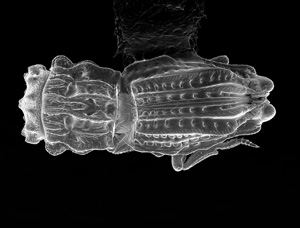 |
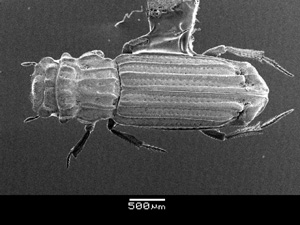 |
Figure 5. Nanotermitodius peckorum, from Howden 2003. Thanks and credits to Jennifer Read, Agriculture Canada |
Figure 6. Rhyparus opacus x x |
| 4(3). . |
Discomedial carina of elytra lacking distinct setal tuft immediately anterior of apical trichomes | |
| 4'. . . |
Discomedial carina of elytra with distinct, narrow setal tuft immediately anterior of apical trichomes (Fig. 7-8) | |
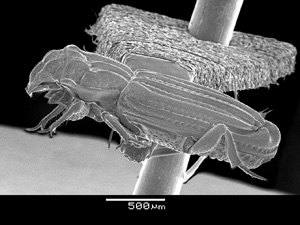 |
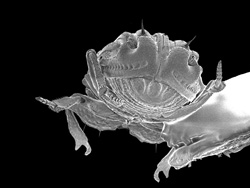 |
Figure 7. Leptorhyparus sp. |
Figure 8. Leptorhyparus sp. |